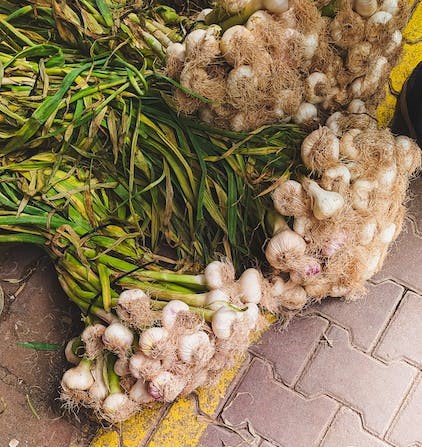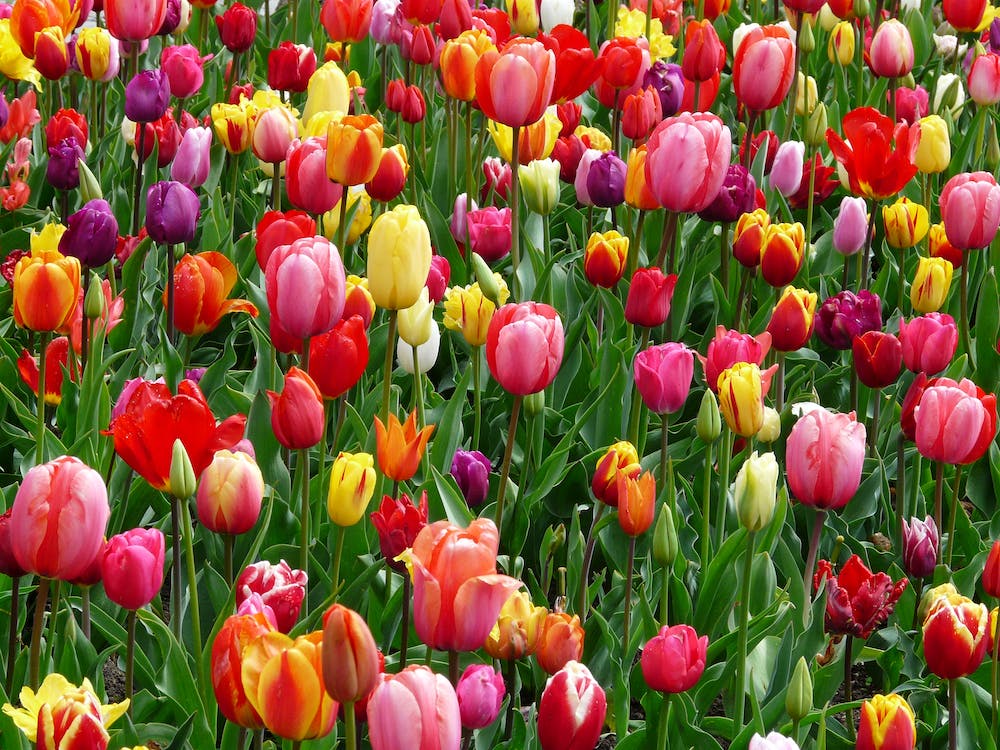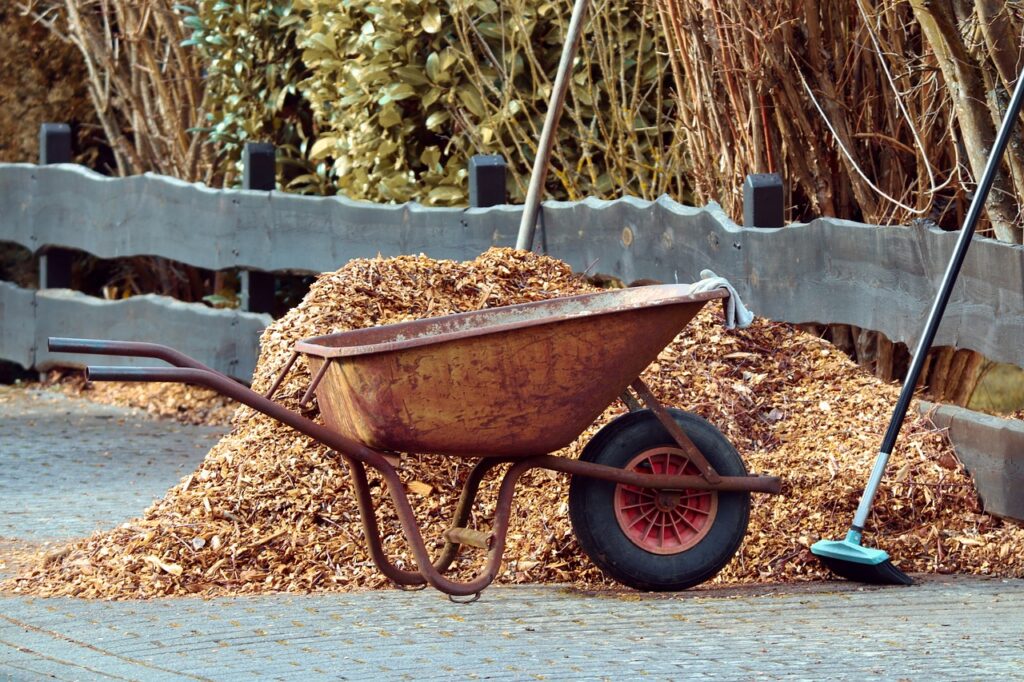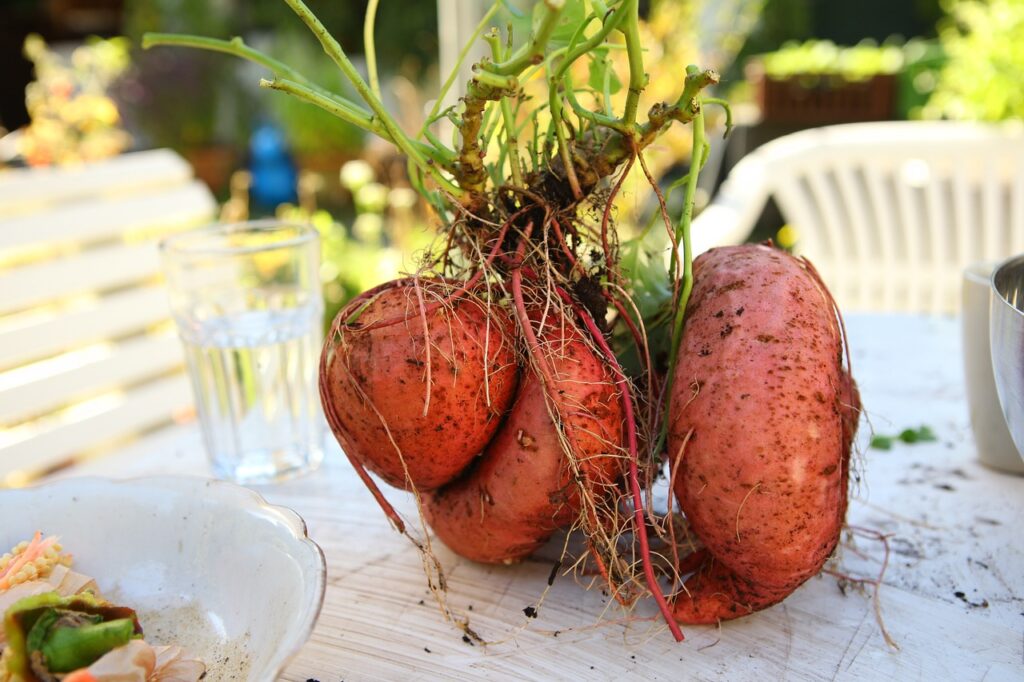Welcome back to our “Year in the Organic Garden Series!” In September, we finished planting our Fall garden and discussed the benefits of Cover Crops. If you missed the post, or want to refresh your memory, please take a look at September in the Organic Garden.

In October, we’ll plant bulbs (edible and flowers) and add some fall color. It’s also a great time to plant perennials before Winter arrives. As always, we welcome your own comments, questions and contributions to help make this an even more useful resource for our readers.
Edible Bulbs
Garlic, shallots and onions can all be planted this month and will be ready late Spring next year. As they will be in the ground for a while, it’s important to pick a location that you’re not planning to use for other crops in the coming months.
In well-draining soil::
- Plant bulbs (onion. shallots) and cloves (garlic) about 3 inches deep with pointed end up
- Top-dress with bone meal and cover with soil
- Add 2-3 inches of compost
- Add 4-6 inches of leaf or straw mulch
- Water thoroughly when everything is in place
The compost and mulch that you added will help to insulate your edible bulbs during the Winter and also slowly break-down to release nutrients. They may or may not send a few shoots to the surface before winter arrives. If they do, don’t worry, the coming frosts and freezes won’t damage anything that’s going on under the soil. If they don’t send up shoots, that’s fine too. They’re just saving their energy for the Spring!
Remember the old adage for these…Plant by Halloween, Harvest by 4th of July!
Fall Bulbs = Spring Flowers
Tulips, daffodils, hyacinths and crocus bulbs can all be planted towards the end of the month. Like we did with edible bulbs, be sure to plant with the pointy end up and at a depth of 2-3 times the bulb’s width. Also, be sure to add bone meal and cover with a layer of compost and/or mulch for best results.

Fall Annuals add a Pop of Color
Mums, violas, ornamental kales and more can be planted now or grown in pots for a burst of color.
Prime time for Perennials
While Spring is the most popular time of year to plant perennials…Fall is actually the better time to do so. As the soil is already warm, perennials planted this time of year can begin adapting to their new home immediately. This added bit of time helps the plant’s root system to become established before the heat and stress of the next Summer arrives.
Also, nurseries may offer discounts to clear inventory as their season winds down. So, definitely don’t miss this chance to round out your organic gardens and landscape!
Mulching
Fall is also a great time to mulch your plantings, trees and garden beds. Mulch will help to insulate the soil, retain water, suppress weeds and provide nourishment to your plants as it breaks down.

Great mulches include:
- Shredded leaves (easy to source this time of year!)
- Pine straw
- Pine bark
- Shredded hardwood (avoid dyed products)
General mulching guidelines:
- At least 2-3 inches deep
- Pull mulch 2-3 inches away from the trunks and stems of woody plants
Other Things to do this Month
Bring outdoor potted plants indoors.
- Be sure to check for insects and treat before you bring them inside to avoid hitchhikers.
- Sharp streams of water and neem oil sprays can be effective at removing insects
- Repeated treatments may be required and continue to observe plants once inside

Harvest and Cure your Sweet Potatoes
- To cure, sweet potatoes need to be in a warm, humid place for 2-3 weeks
- This process will convert starches to sugars and help the sweet potato reach its peak flavor
Test your Soil
- Testing your soil now will check on thing off of the early Spring to-do list and will give you time to properly amend for the next growing season
- Remember that Nitrogen degrades quickly in soil, so no need to add that this time of year
- Soil Tests are available at better garden centers and through your local USDA Extension Office
Looking Forward to November!
In November, we’re likely to see some light frost. We’ll discuss crop protection, additional things that can be planted and preparing for Winter.
Thank you for taking the time to read through this guide. We welcome your comments and questions. Happy organic gardening!

Debra says
thanks you for the information on harvesting sweet potato
Ruby says
How do you know when its time to harvest your root veggies?
brian says
Great question about knowing when to harvest root veggies. For many, they will start to peak out of the surface of your soil when nearing harvest size. Sometimes though, it’s necessary to gently work a finger under the soil to get an idea of how big the root is. If it’s not harvest time, just carefully replace the soil and try again later. On fall root veggies, they can tend to slow down since they get less and less sunlight each day. The good news is that they can stay in the ground for longer and there is no rush to harvest…do so when you’re ready!